Frank Lloyd Wright- The American Architectural Genius
12/03/2024 2024-03-12 16:45Frank Lloyd Wright- The American Architectural Genius
Frank Lloyd Wright, a well-known American architect from the early 20th century, was born Frank Lincoln Wright lived from June 8, 1867, until April 9, 1959. He created the architectural plans for a wide range of structures, such as banks, vacation homes, office buildings, churches, synagogues, petrol stations, beer gardens, and art museums.
Wright executed 532 works and planned over 1,000 structures. Wright was a proponent of creating buildings that were harmonious with both the natural world and human habitation. He referred to his theory as “organic architecture.” This architectural method was applied to Fallingwater (1935), dubbed “the best all-time work of American architecture” by many. Wright was a pioneer of the Prairie School architectural movement and created the iconic Usonian dwelling, a unique concept for American urban planning.
He is credited with founding the American architectural style and is regarded as one of the century’s best architects. Wright was born on June 8, 1867, into a farming family in Richland Centre, Wisconsin.
Unique and imaginative examples of a variety of architectural styles can be seen in his work. Many of the interior features of Wright’s buildings, including the stained glass and furniture, are his own designs. Wright was a well-liked lecturer in both Europe and the United States, having written numerous articles and 20 books. His colourful personal life frequently made news, especially after the murders and fire at his Taliesin studio in 1914. Wright was already well-known during his lifetime, but the American Institute of Architects named him “the greatest American architect of all time” in 1991.
Wright died in Phoenix, Arizona, on April 9, 1959, as a result of surgery complications. His age was ninety-one.
Early Life:
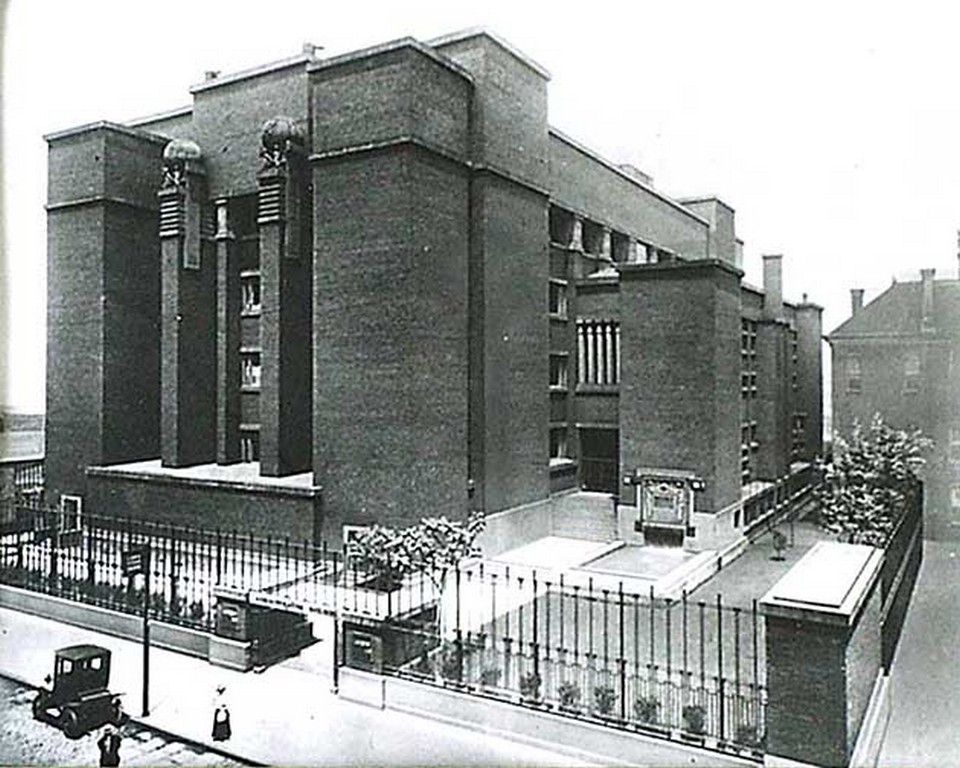
Wikipedia
On June 8, 1867, Frank Lloyd Wright was born in the Wisconsin farming village of Richland Centre. Wright Frank Lincoln was his birth name. William Carey Wright (1825–1904), his father, was a well-liked orator, music educator, sometimes attorney, and clergyman in the community. When William Wright was working as the Richland County superintendent of schools the year before, he had met and married Anna Lloyd Jones (1838/39–1923), a county school teacher of Welsh heritage.
The Wright family relocated to Weymouth, Massachusetts, from Richland Centre. After that, the Wright family moved back to Spring Green, Wisconsin, after experiencing financial difficulties in Weymouth. Madison became their new home. William was a distant parent, but he still loved music, and he specifically introduced his kids to Johann Sebastian Bach’s compositions.
Wright may have attended Madison High School, but there is no proof that he actually received his diploma. In 1886, he was accepted as a special student at the University of Wisconsin–Madison. There, he worked with Allan D. Conover, a professor of civil engineering, and joined the fraternity Phi Delta Theta. He also studied part-time for two semesters. In 1887, he relocated to Chicago, Illinois.
Wright did not get along with other draughtsmen well in his early career. He claimed that during the first few years of his apprenticeship, a number of violent incidents occurred between them. Subsequently, numerous other draughtsmen also exhibited a lack of regard for his workers. Despite this, “Sullivan took [Wright] under his wing and gave him great design responsibility.” Later, Wright would address Sullivan as Lieber Meister (German for “Dear Master”) out of deference. Wright and Paul Mueller, the office foreman, also grew close. Later, between 1903 and 1923, Wright would hire Mueller to construct a number of his public and commercial structures.
Wright started working for Adler & Sullivan on residential buildings at that time. [16] Wright created his own home designs at the time. Before Sullivan realised that one of the houses was a Frank Lloyd Wright design in 1893, he was unaware of Wright’s contributions. This particular home, in the Chicago neighbourhood of Kenwood, was constructed for Allison Harlan and was located just a few blocks from Sullivan’s townhouse.
Because Wright and Darwin D. Martin were friends, Buffalo, New York, is home to numerous instances of his work. The Larkin Company made the decision to construct a new structure in 1902. Wright arrived in Buffalo and created residences for three of the company’s leaders, including the Darwin D. Martin House in 1904, in addition to the Larkin Administration Building (finished in 1904 and destroyed in 1950). Later, Wright constructed their summer house. In addition, he created the Graycliff Estate, which was intended for Darwin D. Martin and Isabelle.
Well-known structures by the legendary architect:
Fallingwater:
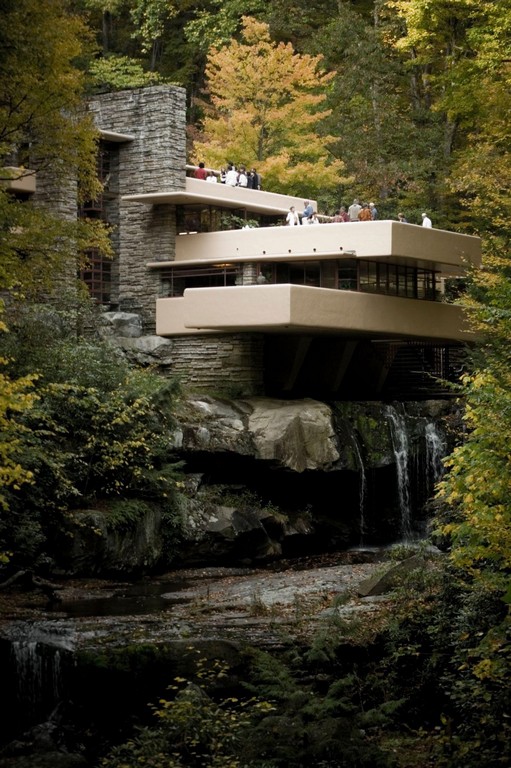 Wikipedia
Wikipedia
In 1935, Frank Lloyd Wright created a summer home for the Kaufmann family over a Pennsylvanian waterfall. He dubbed the house “Fallingwater.” Some people believe it to be the most well-known private residence in the entire world.
Though it appears imposing from a distance downstream, the house actually rests low in the valley above the stream. It features expansive terraces, some of which protrude sharply and hang over the stream or waterfall. Only thin steel supports are present in between the living area’s completely enclosed glass doors and windows.
In all three of the tower’s storeys, windows span the whole height of the structure. The home is primarily constructed of stone. The house’s design features strong vertical and horizontal lines. It is comparable to other natural structures, such as the vertical and horizontal lines found in rock formations. All across the home, one can hear the sound of the waterfall. Wright desired a natural feel to the house and a tight relationship between the inside and outside. The Fallingwater House was voted the “best all-time work of American architecture” by American Institute of Architects members in 1991.
Robie House:
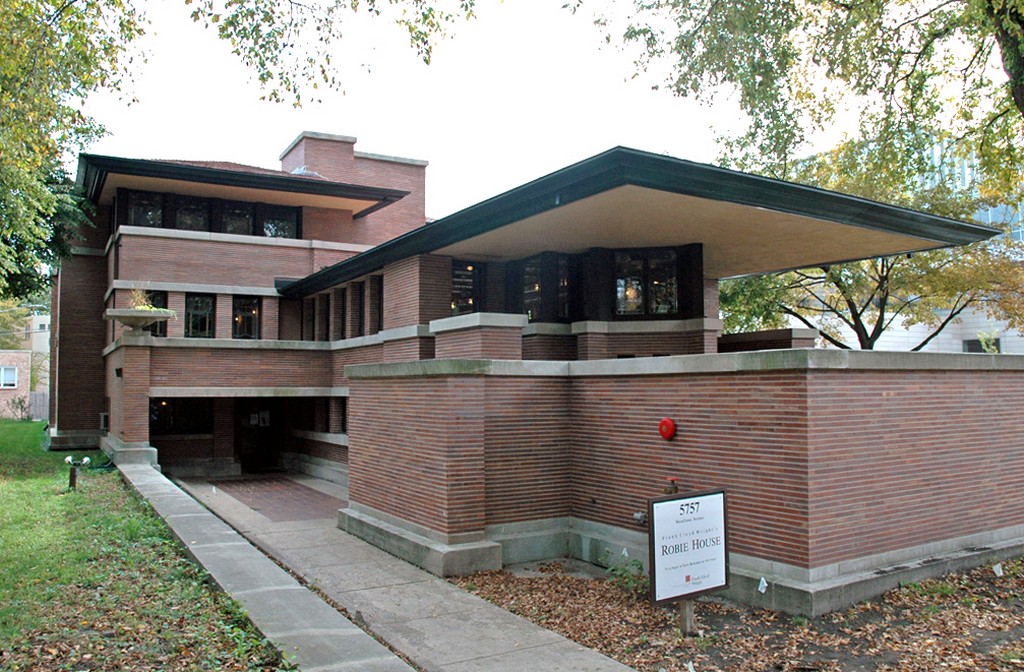
Wikipedia
The Robie House was the name of a well-known residence. Its layout resembled a maze, and its windows were geometric stained glass. The Robie House was a singular home with peculiar hues, forms, and shapes. He completed it in 1910, and it served as a children’s home. Actually, up until 1926, when it was declared unfit for habitation and opened to the public, a large number of kids resided and played there with their families. It was intended to be destroyed numerous times. Nonetheless, Wright’s motivations for building it and the many fond memories he had of it prevented his home from being destroyed twice. At a cost of $10 million, restoration is currently underway.
Johnson Wax Headquarters:

Wikipedia
Another well-known building by Frank Lloyd Wright is the Johnson Wax Headquarters. Wright’s concept of the sleek Art Moderne style, which was popular in the 1930s, is evident in the structure. The building breaks from Wright’s earlier Prairie School designs in that it has a lot of circular forms. To produce the sweeping curves on the inside and outside, over 200 distinct curved ‘Cherokee red’ bricks were used. The horizontality of the building was achieved by creating the mortar between the bricks in the classic Wright style. The polished concrete floor also had the warm, reddish colour of the bricks. The white columns and white stone trim create a subtle yet distinct distinction. Wright designed the building, and Steelcase produced all of the furniture, which reflected many of the distinctive architectural elements of the structure.
The building’s entrance is located within the structure, with a covered carport on one side and the building on the other. The concrete columns supporting the carport are shortened counterparts of the steel-reinforced, tree-like columns found in the Great Workroom.
The Illinois:
Wright came up with the idea to construct a mile-tall skyscraper named the Illinois. Chicago, Illinois, was to be the construction site. With a gross area of 18,460,000 square feet (1,715,000 m2), it may have had 528 floors. 150 helicopters and 15,000 cars would have parking, according to Wright.
Museum of Solomon R. Guggenheim:
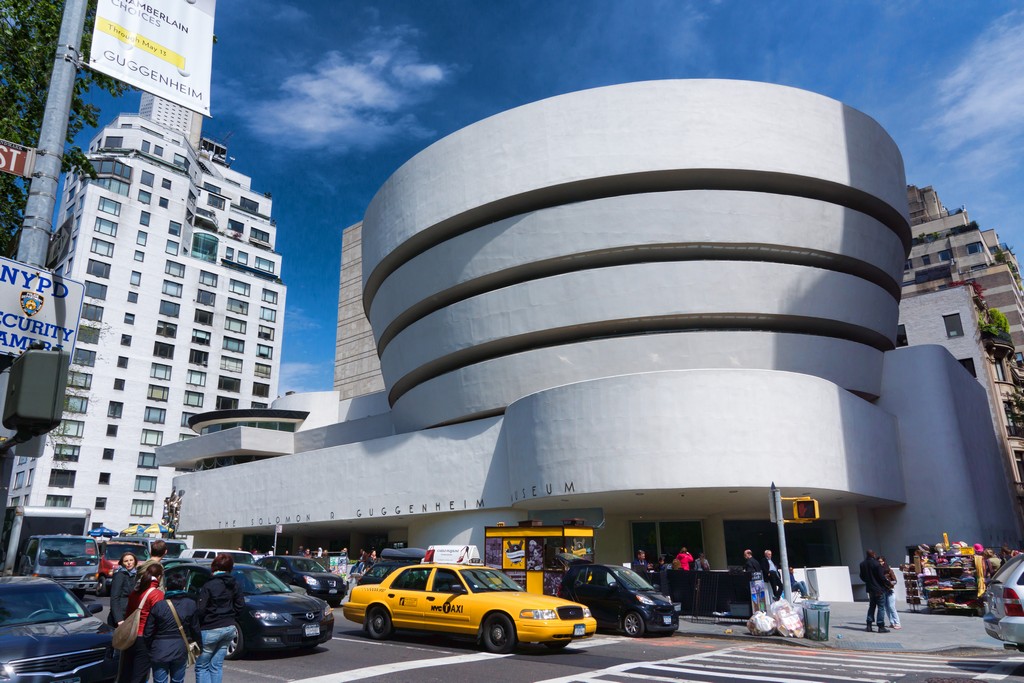
Wikipedia
New York City’s Solomon R. Guggenheim Museum. This project, which Wright worked on for 16 years (1943–1959), is most likely his most well-known work of art. The Fifth Avenue side of the building. Its insides resemble the interior of a seashell.
Its unique central geometry was designed to make it simple for visitors to view Guggenheim’s collection of his paintings. To do this, they can ride a lift to the top level and then stroll down the central spiral ramp, which descends slowly and is lined with circular and triangular light fixtures that complement the building’s geometric design.
Wright did, however, have several designs discarded when the museum was finished, such as his suggestion that the interior be painted off-white. Moreover, the museum currently plans its exhibitions so that visitors must ascend the curved path in order to view them without having to descend from the top floor.
Later career:
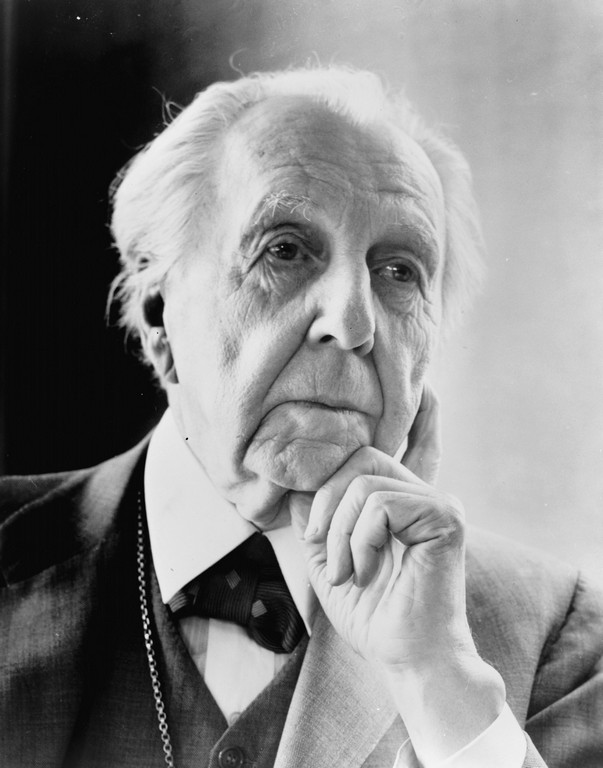 Wikipedia
Wikipedia
Wright was a major proponent of working alone. Throughout his career, he was a staunch opponent of the American Institute of Architects, going so far as to refer to it as “a harbour of refuge for the incompetent” and “a form of refined gangsterism.” Wright responded, “I am the oldest,” after the Institute referred to him as “an old amateur.” Wright established the Frank Lloyd Wright Foundation in 1940. It was designed with education in mind. It maintains Taliesin West in Arizona and Taliesin East in Wisconsin, two Wright structures. It holds 300,000 documents and over 22,000 drawings by Wright in its library. The Frank Lloyd Wright School of Architecture is housed there.
Death:
On April 9, 1959, Wright passed away in Phoenix, Arizona, during surgery to remove an intestinal blockage. Following Wright’s passing, his third wife, Olgivanna, oversaw the Fellowship until her own passing in Scottsdale, Arizona, in 1985. 1966 saw the release of Frank Lloyd Wright’s postage stamp. It was discovered later that year that she had requested to be cremated and moved to Scottsdale along with Wright and her daughter from a previous marriage. At that point, Wright’s remains had been interred in the Lloyd-Jones cemetery, close to the Unity Chapel, in Taliesin, Wisconsin, Wright’s later-life residence, for more than 25 years. Members of the Taliesin Fellowship exhumed Wright’s remains from his grave. After that, his cremated remains were transported to Scottsdale and buried in the memorial garden there.As we conclude our exploration of the legendary Frank Lloyd Wright, it’s evident that his visionary approach to architecture has left an indelible mark on the world. His innovative designs continue to inspire and captivate architects, designers, and enthusiasts alike, serving as a testament to the power of creativity and perseverance.
For those who aspire to follow in Wright’s footsteps and carve their own path in the world of design, opportunities for learning and growth abound. Institutions like the JD Institute of Fashion Technology offer comprehensive programmes in interior design, providing students with the skills, knowledge, and inspiration needed to embark on their own transformative journeys.
By pursuing admissions at the JD Institute of Fashion Technology, aspiring designers can immerse themselves in a supportive and dynamic learning environment where they can hone their craft and nurture their creative vision. With dedication, passion, and the guidance of experienced professionals, students have the potential to become trailblazers in their own right, shaping the future of design and leaving a lasting legacy, much like the great Frank Lloyd Wright himself.













